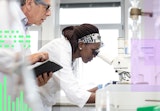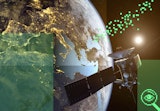Chapter.07/07
The Promise of Big Data
The Promise of Big Data
Chapter 07/07
The Promise of Big Data
Snapshot
Learn about emerging fields of study leveraging the power of big data analytics to gain new knowledge and solve problems in sectors including retail, government and health care.
Key Terms:
- Bioinformatics
- Computational toxicology
- Geospatial intelligence
- Innovation management
Like land, buildings, equipment and employees, data has become a basic requirement of a functioning economy.
It’s useful in helping businesses sell to customers, but big data has applications far beyond marketing or supply-chain management.
As its underlying technologies continue to improve and data storage gets cheaper, big data’s influence on our lives will continue to grow. Our world is full of complex problems, and researchers are increasingly turning to big data to pioneer new fields of study focused on harnessing the power of data to drive important advances in science, productivity and technology.
Bioinformatics

Bioinformatics is the science of applying big data analytics to real-world problems in biology and genomics. The field was born two decades ago when researchers began developing analytical tools to help make sense of the vast, complex and diverse data sets generated by the sequencing of the human genome. view citation[1]
Advances in bioinformatics have given researchers the ability to conduct tasks that would have been impossible just a few years ago, such as running 10 billion tests on a sequence of genetic code. The sequencing made possible by big data analytics now gives scientists remarkable insights into the workings of the human genome, such as how proteins are made and which mutations are related to certain types of cancer.
Computational Toxicology

For generations, researchers have relied on expensive and sometimes controversial animal-testing methods to determine the toxicity of chemicals in products ranging from cosmetics to pharmaceuticals. This dependence may be drawing to a close thanks to computational toxicology, an emerging field of study that marries advanced analytics and the life sciences. Algorithm-based models built on analysis of past chemical safety data can now predict toxicology with accuracy equal to or greater than traditional animal-based studies. Researchers in computational toxicology represent a diverse range of fields, including biology, chemistry, mathematics and computer science. Ending our reliance on animal testing is just one example of the potential applications of their efforts; these scientists’ collective goal is to identify patterns in big data that reveal the genetic connections between toxins and disease.
Geospatial Analytics

Do you have what it takes to work in Big Data?
Learn more
When you order a product online, you may take for granted the massive, complex logistics operation that delivers your order to your door a few days later. To offer this service, companies like Amazon conduct analyses based partly on geospatial analytics to determine where to locate warehouse and distribution facilities and the optimal mix of freight options. view citation[2] Geospatial analytics involves the use of data analysis software to turn geospatial imagery and data into actionable intelligence. This intelligence aids in decision-making for businesses, governments and militaries that are seeking to answer complex questions about how best to run their operations. Geospatial data, which can pinpoint the physical location of a person or object, is collected by satellites, cell towers and sensors in smartphones, appliances and other devices that make up the internet of things. Scientists are conducting research in this area to develop technologies that would help farmers monitor the health of their crops, tell first responders where to go in emergencies and identify areas suitable for urban development.
Innovation Management

In many cases, knowing the right questions to ask is the key to getting value from the data.
Another emerging field, innovation management, helps businesses and organizations turn raw data into insights that can help them make decisions. A software company seeking new customers, for example, can use a program to search the internet for particular words and phrases related to their product. Companies that provide workers’ compensation insurance are using information about past workplace accidents to predict and avoid injuries in the future. But analyzing those millions of data points and drawing the best conclusions requires specialized tools and a deep understanding of data analytics. In many cases, knowing the right questions to ask is the key to getting value from the data. And if it’s done right, the analytical tools applied to big data can make the difference between success and failure for a business enterprise.
References
-
“Bioinformatics.” Britannica. View Source
-
“The Importance Of Applying Spatial Analytics In Business.” Forbes. December 2017. View Source